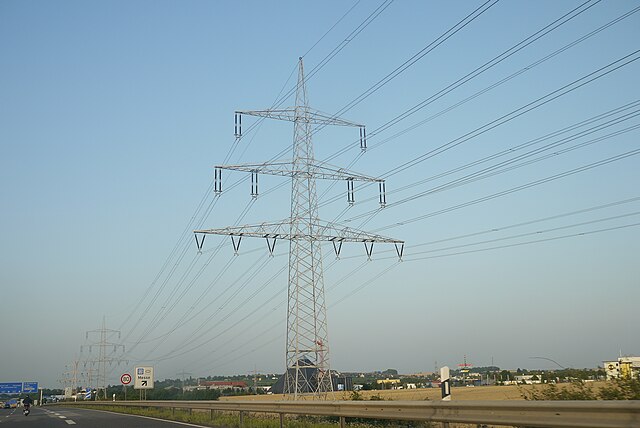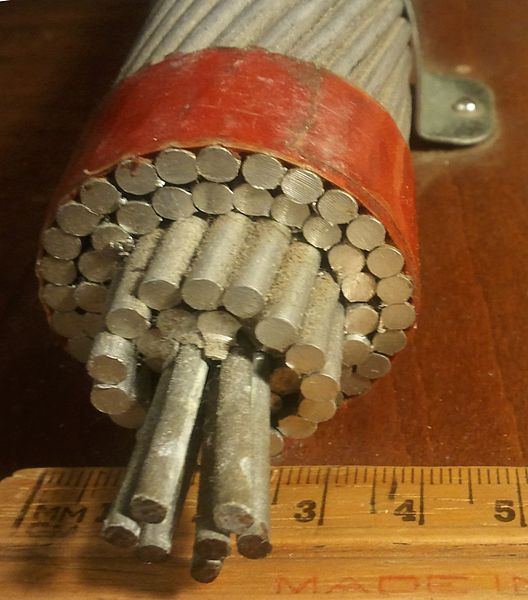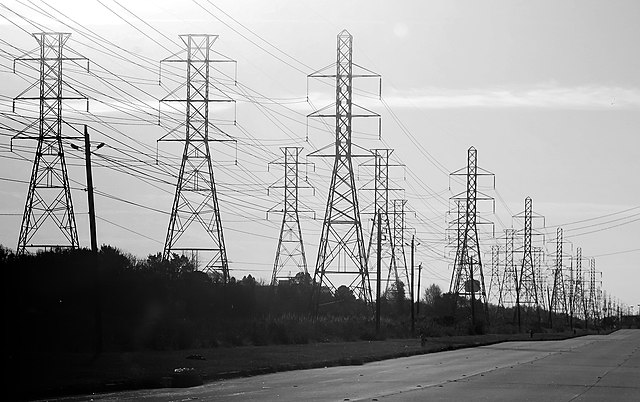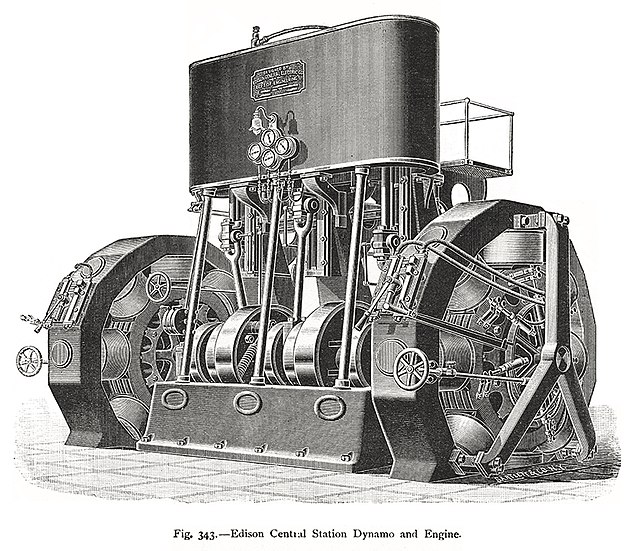Electric power transmission
Electric power transmission is the bulk movement of electrical energy from a generating site, such as a power plant, to an electrical substation. The interconnected lines that facilitate this movement form a transmission network. This is distinct from the local wiring between high-voltage substations and customers, which is typically referred to as electric power distribution. The combined transmission and distribution network is part of electricity delivery, known as the electrical grid.
A four-circuit, two-voltage power transmission line; Bundled 2-ways
A typical ACSR. The conductor consists of seven strands of steel surrounded by four layers of aluminium.
Three abreast electrical pylons in Webster, Texas
New York City streets in 1890. Besides telegraph lines, multiple electric lines were required for each class of device requiring different voltages.
Electricity generation is the process of generating electric power from sources of primary energy. For utilities in the electric power industry, it is the stage prior to its delivery to end users or its storage, using for example, the pumped-storage method.
A turbo generator
Dynamos and engine installed at Edison General Electric Company, New York, 1895
Wind turbines usually provide electrical generation in conjunction with other methods of producing power.
Large dams, such as Hoover Dam in the United States, can provide large amounts of hydroelectric power. It has an installed capacity of 2.07 GW.








